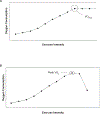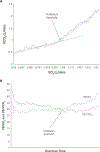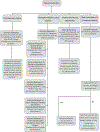Cardiopulmonary exercise testing: relevant but underused
- PMID: 21084784
- PMCID: PMC9445315
- DOI: 10.3810/pgm.2010.11.2225
Cardiopulmonary exercise testing: relevant but underused
Abstract
Cardiopulmonary exercise testing (CPX) is a relatively old technology, but has sustained relevance for many primary care clinical scenarios in which it is, ironically, rarely considered. Advancing computer technology has made CPX easier to administer and interpret at a time when our aging population is more prone to comorbidities and higher prevalence of nonspecific symptoms of exercise intolerance and dyspnea, for which CPX is particularly useful diagnostically and prognostically. These discrepancies in application are compounded by patterns in which CPX is often administered and interpreted by cardiology, pulmonary, or exercise specialists who limit their assessments to the priorities of their own discipline, thereby missing opportunities to distinguish symptom origins. When used properly, CPX enables the physician to assess fitness and uncover cardiopulmonary issues at earlier phases of work-up, which would therefore be especially useful for primary care physicians. In this article, we provide an overview of CPX principles and testing logistics, as well as some of the clinical contexts in which it can enhance patient care.
Conflict of interest statement
Conflict of Interest Statement
Daniel E. Forman, MD, Jonathan Myers, PhD, Carl J. Lavie, MD, Marco Guazzi, MD, PhD, Bartolome Celli, and Ross Arena, PhD disclose no conflicts of interest.
Figures




References
-
- Richardson RS, Harms CA, Grassi B, Hepple RT. Skeletal muscle: master or slave of the cardiovascular system? Med Sci Sports Exerc. 2000;32(1):89–93. - PubMed
-
- Duscha BD, Schulze PC, Robbins JL, Forman DE. Implications of chronic heart failure on peripheral vasculature and skeletal muscle before and after exercise training. Heart Fail Rev. 2008;13(1): 21–37. - PubMed
-
- Jones NL, Killian KJ. Exercise limitation in health and disease. N Engl J Med. 2000;343(9):632–641. - PubMed
-
- Myers J, Prakash M, Froelicher V, Do D, Partington S, Atwood JE. Exercise capacity and mortality among men referred for exercise testing. N Engl J Med. 2002;346(11):793–801. - PubMed
-
- Kodama S, Saito K, Tanaka S, et al. Cardiorespiratory fitness as a quantitative predictor of all-cause mortality and cardiovascular events in healthy men and women: a meta-analysis. JAMA. 2009;301(19): 2024–2035. - PubMed
Publication types
MeSH terms
Grants and funding
LinkOut - more resources
Full Text Sources
Other Literature Sources
Medical
